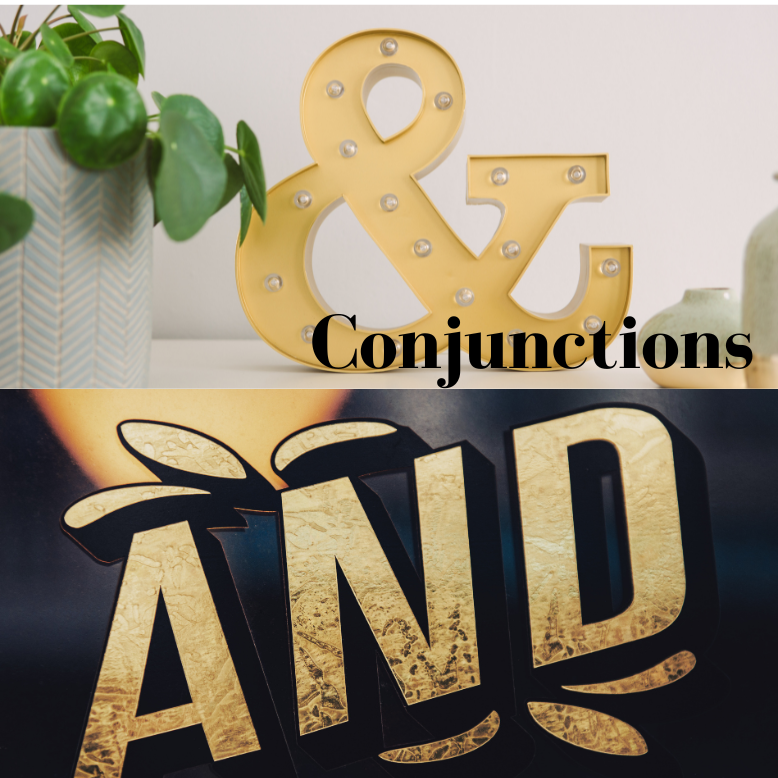The Conjunction

The Conjunction
A conjunction is a fundamental part of grammar that serves as a link or connector between words, phrases, clauses, or sentences.
Conjunctions are essential for constructing coherent and well-structured sentences.
They help establish relationships between different elements within a sentence, making the text more readable and conveying precise meaning.
Types of Conjunctions:
Conjunctions can be broadly categorized into several types based on their functions and roles within a sentence.
Here are the primary types of conjunctions:
Coordinating Conjunctions:
These conjunctions connect words, phrases, or clauses of equal grammatical importance.
The most common coordinating conjunctions are often remembered using the acronym “FANBOYS”:
For: Adds information or gives a reason.
And: Connects similar ideas or elements.
Nor: Indicates a negative alternative or denial.
But: Shows contrast or opposition.
Or: Presents alternatives.
Yet: Indicates contrast or surprise.
So: Demonstrates cause and effect.
Example: She wanted to go to the movies, but she didn’t have enough money.
Subordinating Conjunctions:
These conjunctions introduce dependent clauses (subordinate clauses) and connect them to independent clauses (main clauses). Subordinating conjunctions indicate the relationship between the two clauses, such as cause and effect, time, condition, or contrast.
Example: Because it was raining, we stayed indoors.
Common subordinating conjunctions include because, although, if, when, and while.
Correlative Conjunctions:
These conjunctions come in pairs and work together to join words, phrases, or clauses.
The most common correlative conjunctions include:
Either…or: Indicates a choice between two alternatives.
Neither…nor: Presents two negative alternatives.
Both…and: Connects two similar elements.
Not only…but also: Emphasizes two related ideas.
Example: She is not only intelligent but also hardworking.
Conjunctive Adverbs:
Although not true conjunctions, conjunctive adverbs function similarly to coordinating conjunctions but add more information or clarify relationships between clauses.
Common conjunctive adverbs include however, therefore, consequently, and nevertheless.
Example: She studied diligently; however, she didn’t perform well on the exam.
Relative Pronouns:
While not typically considered conjunctions, relative pronouns like who, which, and that connect relative clauses to the noun they modify.
These clauses provide additional information about the noun.
Example: The book that I read was fantastic.
Understanding the different types of conjunctions and their functions is essential for constructing clear and effective sentences. Properly using conjunctions helps convey relationships between ideas, ensuring that writing is coherent and well-organized.
Here’s a table of coordinating conjunctions along with examples:
| Coordinating Conjunction | Example |
| For | I need to go to the store, for I am out of milk. |
| And | I have to study for my exam, and I need to finish my project. |
| Nor | She neither called nor texted me. |
| But | He wanted to go out, but he was feeling tired. |
| Or | Do you want tea or coffee? |
| Yet | It was late, yet he continued working. |
| So | She practiced a lot, so she performed well in the competition. |
These coordinating conjunctions are used to join words, phrases, or independent clauses of equal importance in a sentence.
They help create compound sentences and express relationships between ideas.
Here’s a table of subordinating conjunctions along with examples:
| Subordinating Conjunction | Example |
| Although | Although it was raining, they went for a hike. |
| Because | He stayed home because he was feeling unwell. |
| If | If you finish your homework, you can go out to play. |
| Since | Since she passed the exam, she’s been very happy. |
| Unless | You can’t watch TV unless you finish your chores. |
| While | She read a book while waiting for her flight. |
| After | After the rain stopped, they went for a walk. |
| Before | Please finish your dinner before you have dessert. |
| Even though | Even though it was late, they continued the meeting. |
| As | He left quietly as everyone was asleep. |
Subordinating conjunctions are used to join a subordinate (dependent) clause to a main (independent) clause, creating complex sentences.
The subordinate clause cannot stand alone as a complete sentence and relies on the main clause for its meaning.
Prepositions -“For”, “During”, “In”, and “Within” to compare
Collective and Individual Nouns
Vowel and Consonant Sounds in Syllable
Auxiliary Verbs: should and would